Columnar Basalt is a
fascinating type of rock, found in many places
all over the world, The most famous locations
for it in the British Isles are the Giant's
Causeway in Northern Ireland and the Island of
Staffa off the west coast of Mull. Both of these
locations are of similar geological age - early
Palaeogene aka Tertiary.
There are several locations round the coast of
Mull where this amazing rock can be seen, mainly
in the south west. Some of these locations are
exposed, rugged and difficult of access.
Some require a boat trip to get to them, such as
Ulva and Staffa.
The main locations are shown on the map below:
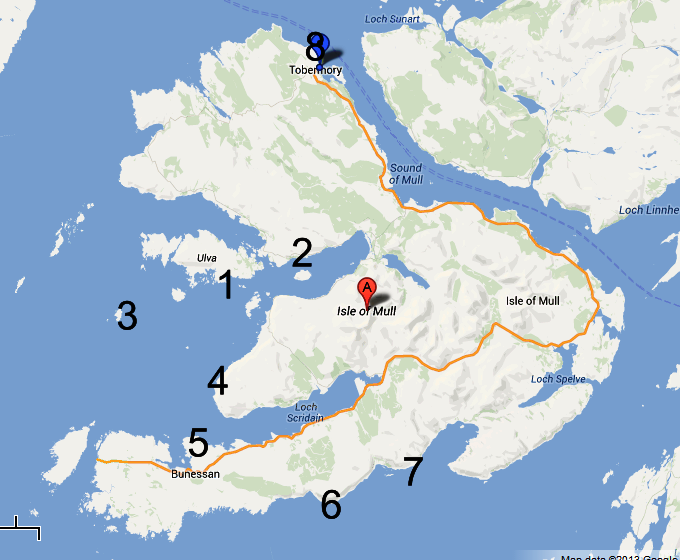
The locations are, in no particular order:
‘
Each of these locations has its own individual page where the columnar basalt is described in detail.
1. Ulva
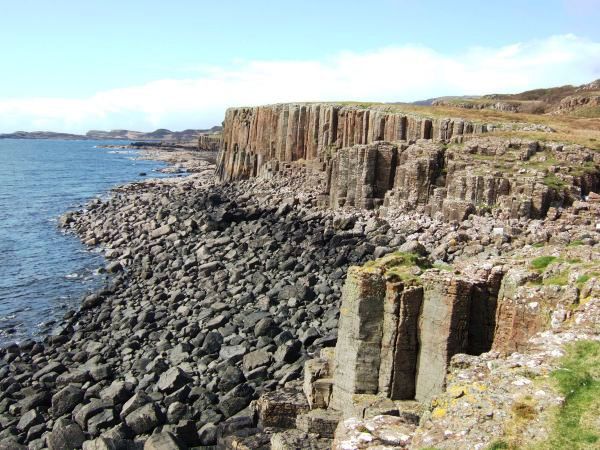
Found on the south coast if Ulva, approximately 45 minutes walk from the slipway. Second only to Staffa in terms of the development of columns. Well worth a visit
2. Ulva Ferry
Just south of the slipway at Ulva Ferry where the boat leaves from, there are some very large columns to be seen. They are not as well developed as the Ulva ones but easy to find. Other columns can be found further round the coast. These can be easily seen from the Gribun road on a clear day.
3. Staffa
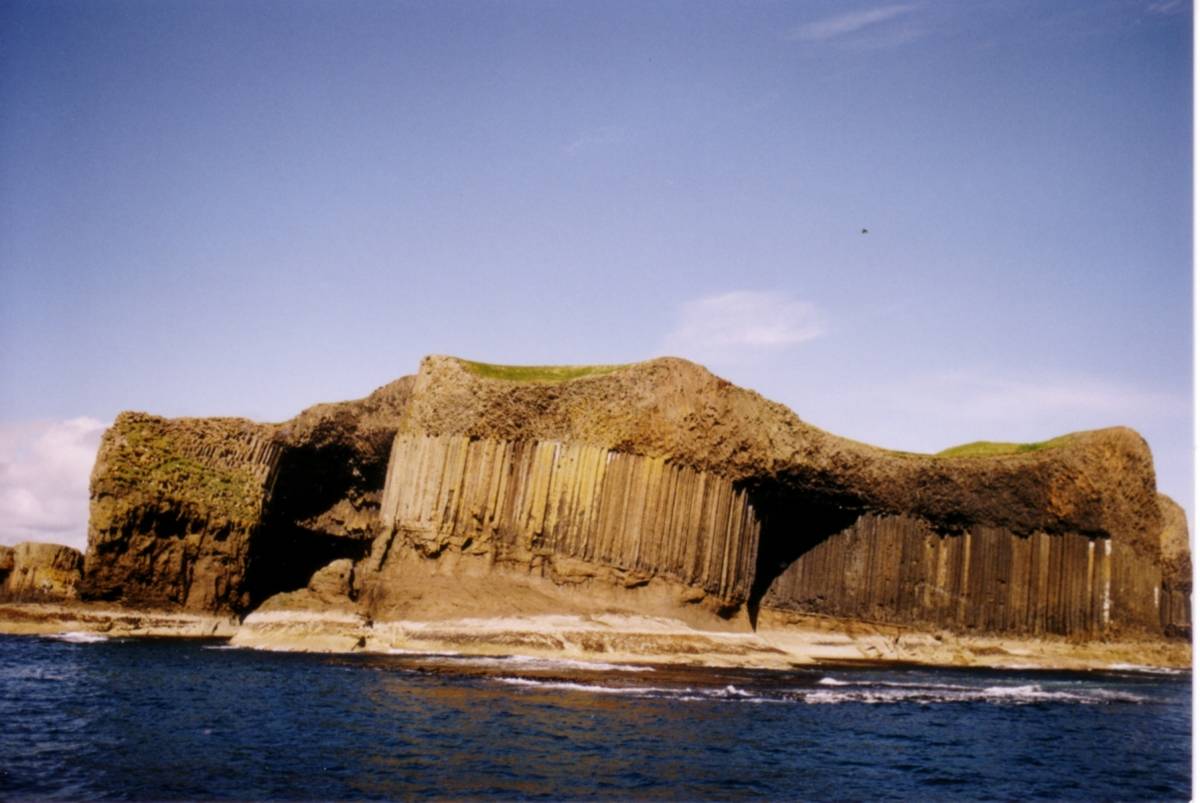
This is the main columnar basalt site in these islands. Spectacular is an understatement. Regular boat trips leave from Ulva Ferry and Iona/Fionnphort. Even if landing is not possible due to sea conditions, the views from the boat are well worth it. A must for any visitors to Mull.
4. Fossil Tree Area
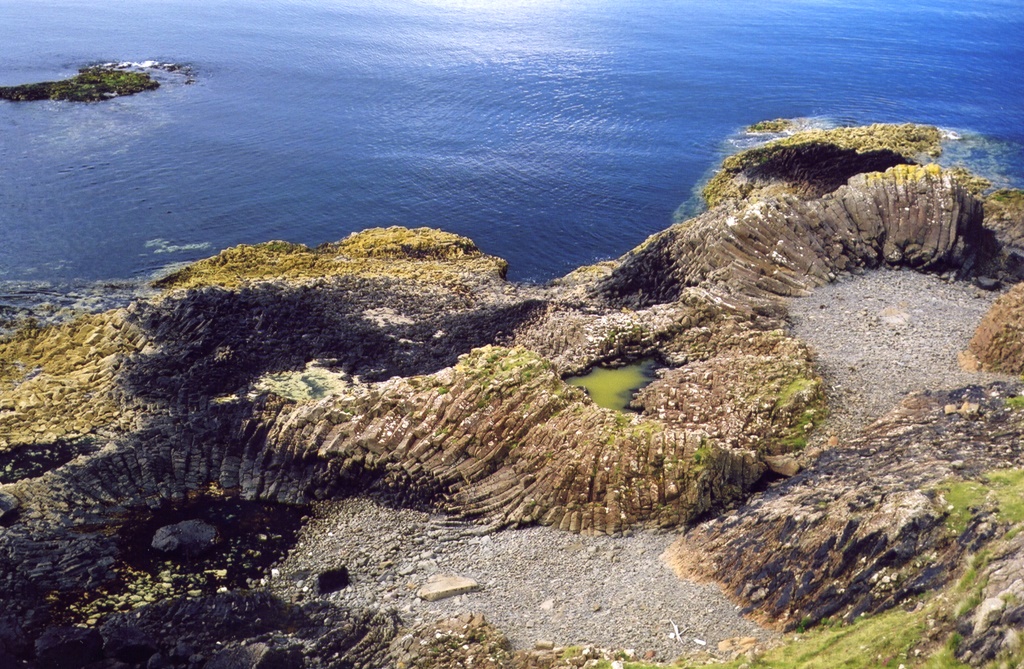
This is the incredibly broken, difficult of access area on the Ardmeanach peninsula. Columnar basalt can be seen on the approach to the Fossil Tree (q.v.) and also round the headland (Rubha na h-Uamha) to the north of the Tree. A long and arduous walk, but satisfying for those who are fit enough
5. Ardtun
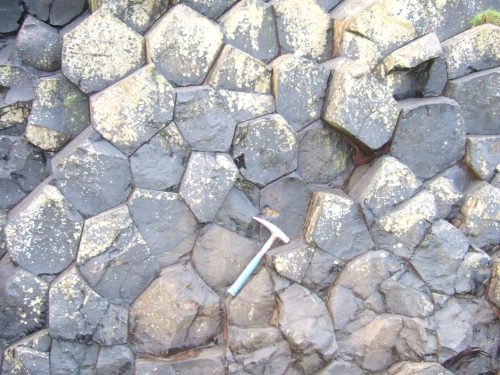
In the vicinity of the famous Leaf Beds, there is a lot of columnar basalt which forms caves, sea stacks and dramatic cliffs. A muddy, boggy walk to approach the site, but spectacular when you get there. The picture above shows horizontal columns in close-up. There are also great views over to the trap-featured lava flows of Ardmeanach
6. Carsaig Arches
Carsaig Arches are one of the geological wonders of Mull. The basalt of which they are composed is columnar, with a layer of volcanic ash at the base. A long and demanding walk but rewarding nonetheless.
7. East of Carsaig
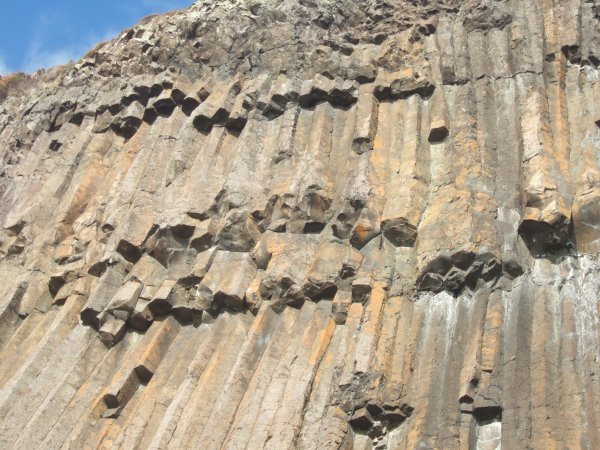
East of Carsaig pier, there is a good path, muddy in places which takes the walker all the way to Lochbuie. There is some good columnar basalt to be seen in the cliffs about 30 minutes walk from Carsaig. A much more accessible location than the Arches (q.v.)
8. Glac Mhor (Bloody Bay)
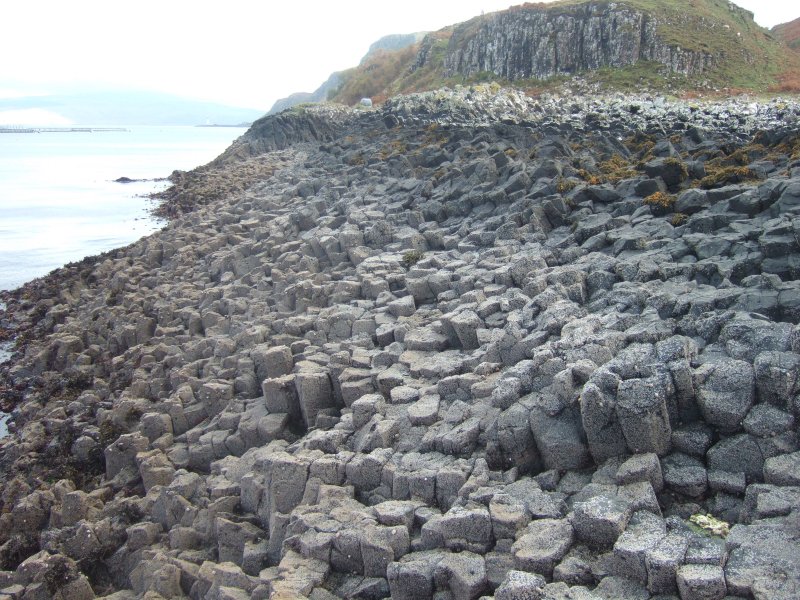
Just north of Tobermory , at the inlet called Glac Mhor, there is an interesting outcrop of columnar basalt. It is not as spectacular as the other locations mentioned but unusual because of its location - all the other sites are in the south and west. There are also a couple of other places in the Tobemory area where columns can be seen, but they are not particularly well developed.